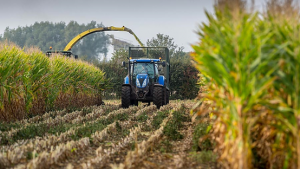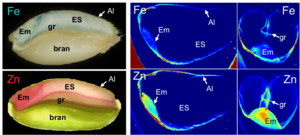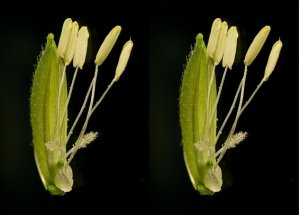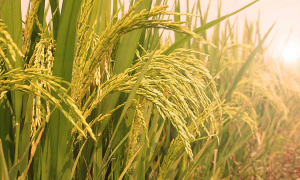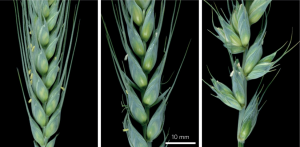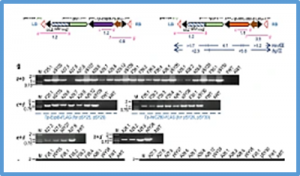Maize genetic diversity is structured into genetic groups selected and improved relative to each other. This process increases group complementarity and differentiation over time and ensures that the hybrids produced from inter-group crosses exhibit high performances and heterosis. To identify loci involved in hybrid performance and heterotic group complementarity, we introduced an original association study model that disentangles allelic effects from the heterotic group origin of the alleles and compared it with a conventional additive/dominance model.
Maize (Zea mays L.) benefits from heterosis in-yield formation and photosynthetic efficiency through optimizing canopy structure and improving leaf photosynthesis. However, the role of canopy structure and photosynthetic capacity in determining heterosis in biomass production and radiation use efficiency has not been separately clarified. We developed a quantitative framework based on a phytomer-based three-dimensional canopy photosynthesis model
Micronutrient malnutrition is one of the most common public health problems in the world. Biofortification, the most attractive and sustainable solution to surmount malnutrition requires the development of micronutrient enriched new crop cultivars. In this study, two recombinant inbred line (RIL) populations, ZM175/XY60 and ZM175/LX987, were used to identify QTL for grain zinc concentration (GZnC), grain iron concentration (GFeC) and thousand grain weight (TGW)
To maximise the benefit of genebank resources, accurate and complete taxonomic assignments are imperative. The rise of genebank genomics allows genetic methods to be used to ensure this, but these need to be largely automated since the number of samples dealt with is too great for efficient manual recategorisation, however no clearly optimal method has yet arisen. A recent landmark genebank genomic study sequenced over 10,000 genebank accessions of peppers (Capsicum spp.)
The endophytic nitrogen (N)-fixing bacterium A02 belongs to the genus Curtobacterium (Curtobacterium sp.) and is crucial for the N metabolism of cassava (Manihot esculenta Crantz). We isolated the A02 strain from cassava cultivar SC205 and used the 15N isotope dilution method to study the impacts of A02 on growth and accumulation of N in cassava seedlings. Furthermore, the whole genome was sequenced to determine the N-fixation mechanism of A02.
Among the six detected loci, qHT7 harbored the strongest association signal and the most associated SNPs. By comparing the transcriptomes of two representative accessions with contrasting heat tolerance, LOC_Os07g48710 (OsVQ30) was selected as a promising candidate gene in qHT7 due to the significant difference in its expression level between the two accessions. Haplotype 4 (Hap4) of LOC_Os07g48710 was determined as the favorable haplotype for heat tolerance via the gene-based haplotype analysis
Heat stress (HS) caused by high-temperature weather seriously threatens international food security. Indeed, as an important food crop in the world, the yield and quality of rice are frequently affected by HS. Therefore, clarifying the molecular mechanism of heat tolerance and cultivating heat-tolerant rice varieties is urgent. Here, we summarized the identified quantitative trait loci (Quantitative Trait Loci, QTL) and cloned rice heat tolerance genes in recent years.
Cucumber (Cucumis sativus L.) is an important vegetable worldwide, but its yield is affected by a wide range of pathogens and pests. As the major subunit of the exocyst complex, the roles of Exo70 members have been shown in Arabidopsis and rice, but their function are unknown in cucumber. Here, we identified 18 CsExo70 members in cucumber, which were divided into three groups (Exo70.1-Exo70.3) and nine subgroups (Exo70A-Exo70I) based on the phylogenetic tree.
Kernel number per spike (KNPS) in wheat is a key yield component. Dissection and characterization of major stable quantitative trait loci (QTLs) for KNPS would be of considerable value for the genetic improvement of yield potential using molecular breeding technology. We had previously reported a major stable QTL controlling KNPS, qKnps-4A. In the current study, primary fine-mapping analysis,
Enterohemorrhagic Escherichia coli (EHEC) O157:H7 is a food-borne pathogen where ruminant farm animals, mainly bovine, serve as reservoirs. Bovine vaccination has been used to prevent disease outbreaks, and the current method relies on vaccines subcutaneously injected three times per year. Since EHEC O157:H7 colonizes mucosal surfaces, an oral vaccine that produces an IgA response could be more convenient.


 Curently online :
Curently online :
 Total visitors :
Total visitors :

